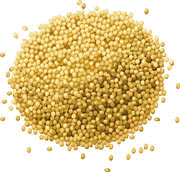International Sorghum and Millet Collaborative Research Support Program (INTSORMIL CRSP)
Date of this Version
6-1-2006
Document Type
Article
Citation
INTSORMIL Report No. 2 (June 1, 2006)
Abstract
The World Bank’s 2006 Human Development Report ranks Niger as the world’s second-poorest nation. Most of its 11 million citizens live in semi-arid grasslands and survive on subsistence cultivation of millet, sorghum, and other drought-resistant crops. Producers sell their crops in September and October, the peak months of the harvest season, when local markets can be flooded with grain and prices are low. These farmers often must then purchase additional food supplies in the “hungry months” of June and July when food grains reach much higher prices.
INTSORMIL’s West Africa Marketing-Processing Project, funded by USAID/WARP, is accelerating the adoption of technology by farmers by increasing farmers’ income with marketing strategies in Niger and three other Sahelian countries, Burkina Faso, Mali, and Senegal. The most successful marketing innovation in the region has been the introduction of the “warrantage” system or inventory credit. Another strategy has been to encourage farmers to produce cleaner grain by modifying the threshing strategy. Farmers then can receive a price premium for quality. The marketing strategies have encouraged farmers to adopt technologies such as (1) water management techniques, (2) moderate levels of inorganic fertilizer and (3) planting of higher yielding, food quality cultivars.


